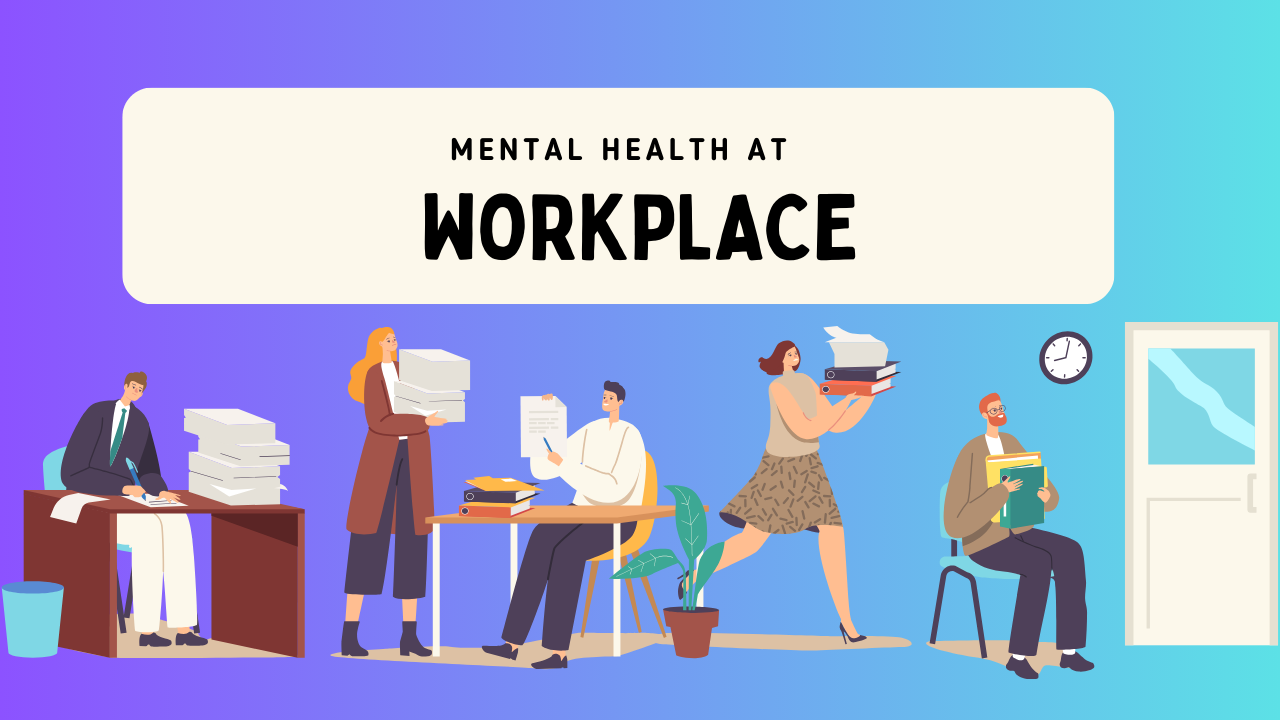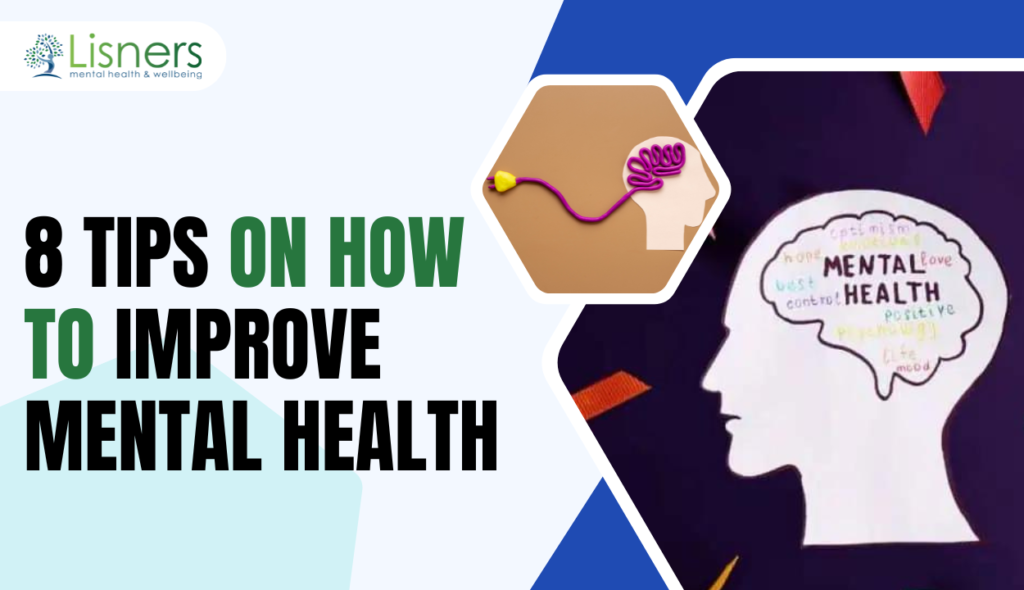
It’s no secret that workplace settings can be high-stress environments. From juggling deadlines to managing challenging projects, there are many demands placed on employees. However, what happens when these demands start to take a toll on your mental health? In this article, we’ll explore the types of mental health issues at workplace, prevalance and impact of deteriorating mental health on productivity, employee and employers responsibility towards it, how to create a mentally healthy workplace and finally how Mental Health and Wellbeing Apps can help
What is mental health?
With reference to workplace, Mental health is a state of well-being in which an individual realizes his or her true abilities in an organization, can cope with the normal stresses of work, can work productively and fruitfully, and is able to make a contribution to their organization.
Good mental health is not just the absence of mental illness. It is a state of well-being in which an individual is able to easily cope with the normal stresses of life.
Everyone has times when they feel worried, anxious, or down. But if these feelings last for more than a few weeks or start to interfere with everyday activities, they may be signs of a mental health problem. Early identification and treatment can help people get back on track and improve their quality of life. Mental health and wellbeing app can be a good and reliable source to educate its users about early symptoms.
What are the types of mental health disorders?
There are many types of mental health disorders, and it is important to be aware of them so that you can identify them early in yourself or others. Some common types of mental health disorders include:
Anxiety disorders: These disorders involve fear, worry, and other forms of anxiety that can interfere with daily life.
Depressive disorders: These disorders are characterized by persistent feelings of sadness, emptiness, or worthlessness. They can also include sleep problems, appetite changes, and fatigue.
Bipolar disorder: This disorder is characterized by periods of mania or hypomania (abnormally elevated or irritable mood) alternating with periods of depression.
Obsessive-compulsive disorder (OCD): This disorder is characterized by intrusive thoughts (obsessions) and repetitive behaviors (compulsions) that the person feels they must do to reduce their anxiety.
Post-traumatic stress disorder (PTSD): This disorder is characterized by flashbacks, nightmares, and avoidance of anything that reminds the person of the traumatic event. in the past.
Prevalence of mental health issues in the workplace
Mental health issues are increasingly prevalent in the workplace. As per the latest The7thFold’s ‘Employee Well-Being Survey, 2020′, 36% of employees in India are suffering from some form of mental health issues and as much as 50% of them are worried about the uncertain future in the times of Covid 19 pandemic. There have been ample evidence that mental health issues are a growing problem in the workplace.
There are a number of ways to address mental health issues in the workplace.
First, employers should be aware of the signs and symptoms of mental illness. They should also have a policy in place to address mental health issues. Additionally, employees should be encouraged to seek help if they are struggling with their mental health. Finally, there should be resources available to employees who need help.
If you are an employer, it is important to be aware of the prevalence of mental health issues in the workplace and to have a plan in place to address them. If you are an employee, don’t be afraid to seek help if you are struggling. There are resources available to you. Now a days mental health care apps are doing a wonderful job by connecting you with best-in-class therapists from the comfort of your homes with complete anonymity and confidentiality.
How can mental health disorders affect the workplace?
Mental health disorders can have a significant impact on the workplace. They can affect an individual’s ability to perform their job, and can also create a hostile or unproductive work environment.
They can also increase an organization’s healthcare costs. In some cases, mental health disorders can even lead to workplace violence.It is important for employers to be aware of the signs and symptoms of mental health disorders, and to create a work environment that is supportive of employees’ mental health.
The impact of mental health issues on productivity
Mental health issues can have a significant impact on workplace productivity. Employees who are struggling with mental health problems may have difficulty concentrating, completing tasks, and working well with others. In extreme cases, mental health issues can lead to absenteeism(not coming to office at all) and presenteeism (coming to work but not being productive).
As per WHO, the economic loss due to mental health conditions, between 2012-2030, is estimated at USD 1.03 trillion in India.
Employers need to be aware of the signs that an employee may be struggling with a mental health problem. These include changes in behaviour, such as increased absences or lateness, decreased productivity, and difficulty concentrating. If you notice these changes in an employee, it’s important to have a conversation with them about what might be going on.
Employers’ responsibilities towards employees with mental health disorders
Mental health disorders are increasingly common in the workplace, and employers have a responsibility to ensure that their employees are supported. A recent study shows that at 29 percent, India has the second-highest number of employees dealing with corporate burnout. Employers can support employees with mental health disorders in the following ways:
– Providing access to mental health services, offering employee assistance programs, and
promoting workplace flexibility
– Providing information and training on mental health disorders to all staff.
– Encouraging an open culture where employees feel free to discuss their mental health
– Supporting employees who disclose a mental health disorder, and making reasonable
adjustments to help them stay in work
By taking these steps, employers can create a supportive environment for all employees, and help to reduce the stigma around mental health. Read about how TCS takes care of the mental health of their associates here.
Employees’ rights in the workplace
When it comes to mental health, employees have certain rights in the workplace. Employers cannot discriminate against employees with mental health conditions. Employers also have a responsibility to create a work environment that is free from discrimination and harassment. This means that employers should take steps to prevent and address any discriminatory or harassing behavior towards employees with mental health conditions.
If you are an employee with a mental health condition, it is important to know your rights in the workplace. If you feel that your employer is not meeting their obligations, you can ask them to do so. There are many legal safeguards available as per the Mental Healthcare Act 2017. Meanwhile If you think you need assistance outside the workplace arrangement, you can download some of the best Mental Health and Wellbeing Apps available as a first line of response for mild to moderate mental health issues.
How to create a mentally healthy workplace
Mentally healthy workforce is a prerequisite for the success of organization. There are a number of things that employers can do to create a workplace that nurtures a mentally healthy workforce, including:
1. Promote open communication: Encouraging employees to openly communicate with one another can help to create a supportive and positive work environment.
2. Promote work-life balance: Allowing employees to have a healthy work-life balance can help reduce stress levels and promote overall wellness.
3. Encourage employee involvement: Giving employees the opportunity to be involved in decisions that affect them can help create a sense of ownership and belonging to the workplace.
4. Promote healthy lifestyle choices: Supporting employees in making healthy lifestyle choices can help reduce the risk of developing mental health problems.
Some things they can do include maintaining a healthy lifestyle, getting regular exercise, and taking breaks when needed. Employees should also know where to go for help if they are struggling with their mental health. Organizations can tie-up with Mental Health Care App companies to facilitate accessibility to care.
Conclusion
Mental health should be given as much importance at workplace as physical health. Employers need to create a healthy and supportive work environment to ensure the well-being of their employees. Employees need to take responsibility for their mental health and seek help when needed. Mental health problems can impact productivity, performance and attendance at work.
As someone who has struggled with mental health issues at some point in time, I can attest to the importance of creating a mentally healthy workplace. When we feel supported and respected at work, it can make a world of difference in our overall well-being. If you are struggling with mental health issues, know that you are not alone and there is help available. Reach out to a trusted friend or family member or a therapist or an online therapy app to get the support you need.







